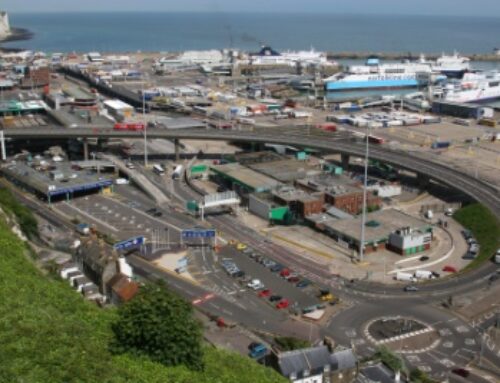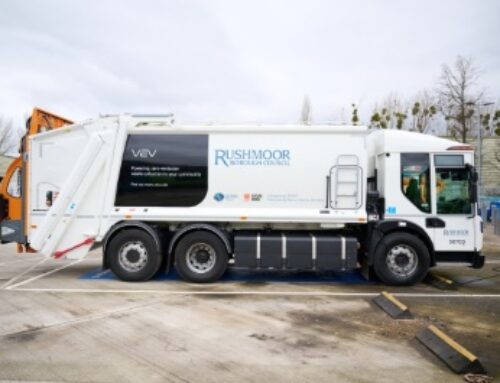Safety in the spotlight
 Lee Sadd, senior trainer at SAMS Ltd, assesses the current safety landscape of the HGV sector
Lee Sadd, senior trainer at SAMS Ltd, assesses the current safety landscape of the HGV sector
Despite the myriad ways in which health and safety has improved our lives, it’s still often seen as a burden. This line of thinking can be particularly prevalent in truck driving, where the need to keep the world’s transit moving precludes more drastic changes. Even the Driver CPC qualification, which has been in force for nine years now, is too often put off and neglected.
Many positive changes have been made, but there is more work yet to be done at all levels – by the industry, manufacturers, individuals and central government. And there’s also a potential revolution on the horizon in the form of autonomous vehicles, and greater driver support. So what is the state of truck safety in 2018, and where can we go from here?
Safety statistics
On the face of it, truck safety has improved much in line with vehicle safety. Casualties have fallen steadily year on year since 2005, with all severities of injury down by nearly 90,000 between 2005 and 2015.
Statistics for 2013 also showed a slight (three per cent) drop in HGV accidents on the previous year, and the rate of accidents per billion miles had dropped substantially over a ten-year period.
 But because the government only intermittently releases details on collisions involving HGVs (instead listing road collisions by the victim’s mode of transport), the role of lorries and HGVs has been somewhat obscured. Research from 2013 by the Campaign For Better Transport gives us a clearer window into the issue.
But because the government only intermittently releases details on collisions involving HGVs (instead listing road collisions by the victim’s mode of transport), the role of lorries and HGVs has been somewhat obscured. Research from 2013 by the Campaign For Better Transport gives us a clearer window into the issue.
Their figures showed that 52 per cent of fatal accidents on motorways involved HGVs, despite making up only 10 per cent of the traffic.
HGVs were also five times more likely to be involved in a fatal accident on minor roads, and were responsible for 20 per cent of fatal accidents on A-roads. This is corroborated by 2016 statistics for London, which show that lorries are responsible for more than 50 per cent of fatalities involving cyclists in the city, and around a fifth of pedestrian deaths.
Without more concrete statistics, it’s hard to draw judgements on where truck safety is in 2018. It is probably reasonable to expect that figures will have decreased as a result of technological developments, the repetition of the CPC qualification, and other road safety improvements.
But other issues may be working to negatively affect safety figures, particularly in regards to proper rest and driver wellbeing.
Driver training
 Driver training is one of the areas where health and safety considerations are most vigorous. The Europe-wide introduction of the Driver CPC qualification in 2009 represented a long overdue overhaul of driver training.
Driver training is one of the areas where health and safety considerations are most vigorous. The Europe-wide introduction of the Driver CPC qualification in 2009 represented a long overdue overhaul of driver training.
The 35 hours of training every five years was designed to ensure that drivers stay up-to-date on current truck safety standards, and covers a broad range of topics in both practice and theory.
If there are issues with the scheme – outside of the perceived burden on drivers – it’s the way the courses can be split up. On top of the potential five years between tests, there can be as much as a two year gap between passing the theory and practice CPC modules.
While the pass marks for all but the hazard theory test are above 80 per cent, this still raises a question as to whether the maximum permitted gap between tests should be lowered. If nothing else, this might encourage more drivers to complete their CPC earlier and in fewer instalments, cementing the safety lessons from their courses.
One lesson which perhaps needs more focus is fatigue and rest. It’s thought that official statistics grossly underreport the influence of fatigue in crashes, due to the difficulty of testing for tiredness.
Yet studies show that a lack or absence of sleep has similar effects to drink driving, imposing severe penalties on reaction times and control. New legislation has mandated rest in proper break areas, but more needs to be done in both enforcement and provision.
Vehicles and technology
As drivers and companies have looked to improve safety and reduce their own liabilities, technology has become much more of a focus. Once marginal or optional safety features have become much more widely deployed in HGVs across the country, particularly on larger vehicles.
360-degree cameras, side detection sensors, side guards, night modes and additional mirrors are being fitted to a greater number and variety of goods vehicles, and this is to be commended.
 An interesting recent development is the field of driver distraction and drowsiness recognition (DDDR).
An interesting recent development is the field of driver distraction and drowsiness recognition (DDDR).
These systems, carried in the cab and worn by the driver, monitor eye and head movements such as eye closure and a nodding head. If it detects symptoms of fatigue, it can issue an alert to the driver and/or a central office, ensuring the driver seeks somewhere to rest. This is still a developing technology, but should see increased uptake in 2018.
There have also been exciting advances in the field of autonomous vehicles, which has the potential to revolutionise transit, particularly over long distances.
As the pioneers of cruise control and backbone of businesses, it seems likely that improving HGV safety and efficiency will be a major focus of companies including Google, Tesla and Dyson. Automatic slowing and stopping of vehicles is potentially even more useful and more easily implemented, with a lower cost of acquisition.
Unlike other industries, there is little chance that autonomous vehicles will cause job losses, at least in the short term.
There is, however, a danger that this technology will become a crutch, with drivers relying on software to attend to problems rather than being a last resort. It seems likely that training and qualifications will have to adapt to reinforce this message, as well as inform people on the benefits and limitations of these technologies.
Laws and regulations
While a number of safety features had already been mandated by national government, the last few years has seen many features implemented across Europe. Electronic stability control (ESC), emergency braking and lane departure warnings are now mandatory, and many companies are choosing to pre-empt new laws by investing in better safety tech.
More controversial are the proposed direct vision standards in London. Sadiq Khan’s plan to clean up the air in London has caused uncertainty among operators, according to the FTA, delaying the acquisition of newer, cleaner vehicles. As well as impacting the safety of pedestrians and road users, these newer vehicles would also likely have newer and more advanced safety features.
 The continued migrant crisis and spectre of Brexit also mean uncertain times for international drivers and regulations.
The continued migrant crisis and spectre of Brexit also mean uncertain times for international drivers and regulations.
Breaks and driving hours are of course well regulated, although pressure for greater efficiency still causes some drivers to skip them. The continued implementation of Operation Stack, meanwhile, has led to unpopular changes to rest periods.
New fines for drivers in Kent avoiding designated rest areas have been heavily criticised, as there are not enough of these areas to cater to all drivers. Criticisms have also been levelled at the safety of these areas, with poor CCTV coverage and security.
Much has improved over the past decade or so, and the industry has been undeniably proactive in addressing safety concerns around HGVs.
The statistics and current events, however, show that we need to remain vigilant when it comes to the safety of pedestrians and other road users. Going forward into 2018 beyond, the industry and government should work to adopt standards in line with Europe, and combine rigorous training with innovative new safety features.
Kent-based SAMS Ltd is a provider of health and safety consultancy and training services, including Driver CPC courses. It offers a range of classroom courses, business advisory services and event management solutions.











